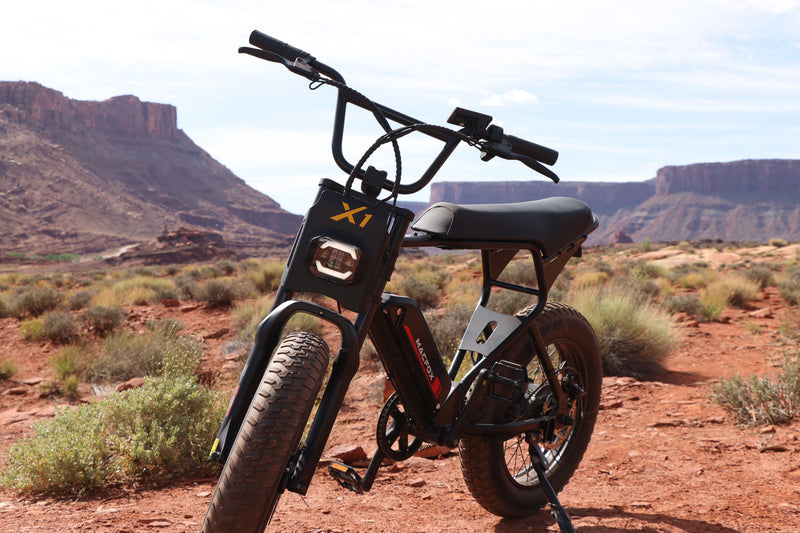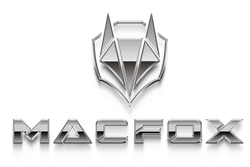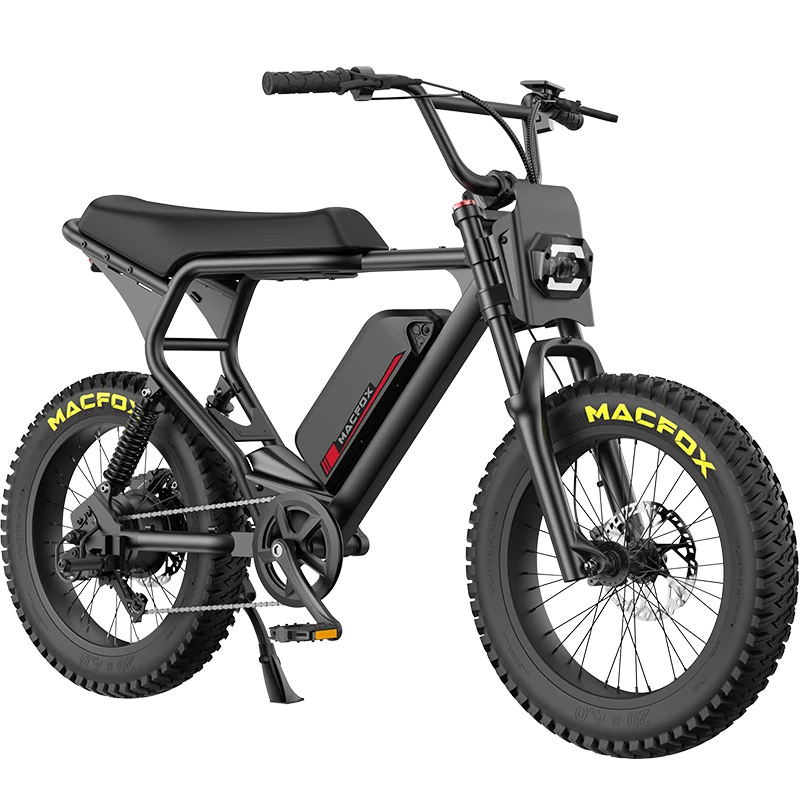The electric bicycle (e-bike) controller is undoubtedly the heart and soul of the entire e-bike system, often referred to as its “brain.” This essential component plays a crucial role in managing power delivery, speed regulation, and the integration of safety features.
By coordinating the interactions between the motor, battery, and rider inputs, the controller ensures that every ride is smooth, efficient, and safe. Its role is pivotal not only in how the e-bike functions but also in shaping the rider's overall experience.
As the technology behind e-bikes evolves, so does the sophistication of their controllers. Today, advanced controllers utilize brushless motor technologies, including sine wave and dual-mode operations, which offer superior smoothness, quieter rides, and enhanced energy efficiency.
With continuous advancements in programmable settings, regenerative braking, and smart connectivity, e-bike controllers have become more versatile and intelligent. For any rider looking to optimize their e-bike’s performance, understanding the controller’s operation is key.
The Role of the E-Bike Controller
The controller’s primary responsibility is to regulate the flow of power from the battery to the motor. But it does much more than that. At its core, the e-bike controller ensures that the rider's inputs—whether from a throttle or pedal-assist system—are translated into precise motor commands, allowing for a controlled and smooth ride.
The controller adjusts power dynamically, ensuring that riders enjoy a consistent experience, whether they are cruising on flat terrain or climbing steep inclines.
Additionally, modern controllers incorporate advanced safety features that prevent electrical malfunctions and safeguard critical components. These include overcurrent protection, thermal protection, and low-voltage cutoffs. Such features are essential in preserving the longevity of the e-bike while ensuring the safety of the rider.
Core Functions of E-Bike Controllers
Power Regulation and Speed Control
The controller’s primary function is to regulate power, ensuring that the motor receives the proper voltage and current based on the rider’s needs. Power regulation ensures consistent performance and helps preserve the battery's lifespan. The controller adjusts the motor’s speed based on input signals from the rider, such as throttle position or pedal-assist level, providing a seamless riding experience.
Moreover, advanced controllers adapt to terrain conditions. On hilly terrain, for instance, the controller will adjust power output to maintain a smooth ride and conserve battery life, ultimately increasing the e-bike's overall range.
Safety Features
Safety is one of the controller's most crucial aspects. High-quality controllers integrate numerous safety features, such as:
-
Overcurrent Protection: Prevents excessive current flow that could damage the motor or battery.
-
Thermal Protection: Protects against overheating, ensuring that the system operates within safe temperature limits.
-
Low Voltage Cutoff: Ensures the battery doesn’t become over-discharged, which could result in permanent damage.
Moreover, some controllers incorporate security features, including immobilizers that prevent unauthorized use, adding another layer of protection to the e-bike.
Real-Time Monitoring and Adjustments
Modern e-bike controllers feature real-time monitoring, which tracks various performance metrics, including speed, battery level, temperature, and torque.
These controllers continuously adjust motor performance based on sensor inputs, ensuring that power delivery is optimized for both performance and battery efficiency. For example, a controller might lower power during long periods of coasting to conserve energy and extend the battery’s range.
The Microcontroller Unit (MCU) embedded within the controller is responsible for processing this data and making real-time adjustments. These algorithms optimize the balance between performance and energy consumption, ensuring a long-lasting and efficient riding experience.

Types of E-Bike Controllers
Motor Compatibility: Brushed vs. Brushless Controllers
E-bike controllers come in different varieties, often tailored to the type of motor they support. Brushed and brushless motors are the two primary motor types, and the controller must be compatible with each type to optimize performance.
-
Brushed Motors: These motors use physical brushes to deliver power to the motor windings. While inexpensive and simple, they are less efficient and require more maintenance.
-
Brushless Motors: These motors are more energy-efficient and require less maintenance. They are now the preferred choice for modern e-bikes due to their smooth operation, quieter performance, and longer lifespan.
Controllers designed for brushless motors tend to be more sophisticated, utilizing advanced algorithms to manage the motor’s operation more efficiently.
Control Waveforms: Square Wave, Sine Wave, and Dual Mode
E-bike controllers also differ in the type of waveform technology they use to manage power delivery. Each waveform has its own advantages:
-
Square Wave Controllers: These are simple, cost-effective controllers but tend to produce noisier and less smooth motor operation.
-
Sine Wave Controllers: Offer a quieter, smoother, and more efficient motor operation, enhancing the rider's experience. They are particularly effective at providing more precise control over power delivery.
-
Dual Mode Controllers: These highly versatile controllers can operate in both sensored and sensorless modes, offering flexibility depending on the rider's needs and terrain conditions.
The evolution from square wave to sine wave and dual-mode controllers reflects the industry's emphasis on providing a refined, high-quality riding experience.
Key Specifications and Compatibility Considerations
When selecting an e-bike controller, compatibility with the battery and motor is crucial. Voltage, current, and power ratings must match between the controller, battery, and motor to avoid performance degradation or damage.
-
Voltage Matching: The controller must match the battery’s nominal voltage, whether it’s 36V, 48V, or 72V.
-
Current Rating: The controller's current rating determines how much power it can safely supply to the motor. Selecting a controller with a slightly higher current rating than the motor's peak current demands ensures that power surges can be handled efficiently.
-
Motor and Sensor Compatibility: The controller must also match the motor type (brushed or brushless) and sensor configuration (sensored or sensorless) to ensure optimal performance.
Advanced Functionalities and Programmability
Modern controllers offer advanced features that allow for increased customization and optimization. These features include:
-
Programmable Settings: Riders can adjust settings such as maximum speed, acceleration curves, and power delivery profiles to suit different riding styles and conditions.
-
Regenerative Braking: This feature recovers energy during braking and feeds it back into the battery, improving efficiency and extending battery life.
-
Smart Connectivity: Controllers can now connect to smartphones or dedicated displays, providing real-time performance data and enabling firmware updates.
Self-diagnosis and calibration features also help riders maintain the system by flagging issues before they cause problems.
Installation, Replacement, and Troubleshooting
Proper installation and maintenance of an e-bike controller are essential for ensuring optimal performance. Key steps include connecting the battery, motor, throttle, and brakes to the controller according to the manufacturer’s instructions.
Common issues include loose wiring connections, blown fuses, and overheating. Riders should regularly check wiring integrity, ensure that the controller is adequately ventilated, and maintain the battery in good condition to avoid common malfunctions.
Conclusion
The electric bicycle controller is the cornerstone of an e-bike’s performance, safety, and rider experience.
Its evolution from basic power management systems to sophisticated, adaptive technologies has drastically improved the functionality of e-bikes. Understanding the controller’s role and capabilities allows riders to make informed decisions, ensuring their e-bike operates efficiently and safely.
As e-bike technology continues to advance, controllers will play an even more significant role in enhancing rider satisfaction. With features like programmable settings, regenerative braking, and smart connectivity, modern e-bike controllers are transforming the way we experience personal transportation.
FAQs
Q: How does an e-bike controller affect the ride experience?
An e-bike controller significantly impacts the ride experience by regulating power delivery, ensuring smooth acceleration, and controlling speed. It also integrates safety features such as overcurrent protection and thermal protection, which help enhance the overall riding experience and safety.
Q: What is the difference between brushed and brushless motor controllers?
Brushed motor controllers are simpler and less expensive, but they are less efficient and require more maintenance. Brushless motor controllers, on the other hand, offer higher efficiency, quieter operation, and longer motor life, making them the preferred choice for modern e-bikes.
Q: Can I upgrade my e-bike controller?
Yes, many e-bikes allow for controller upgrades. Upgrading to a more advanced controller can provide better performance, additional features like regenerative braking, and more precise power control, enhancing the overall ride quality. However, it's important to ensure compatibility with your motor and battery before making an upgrade.


















